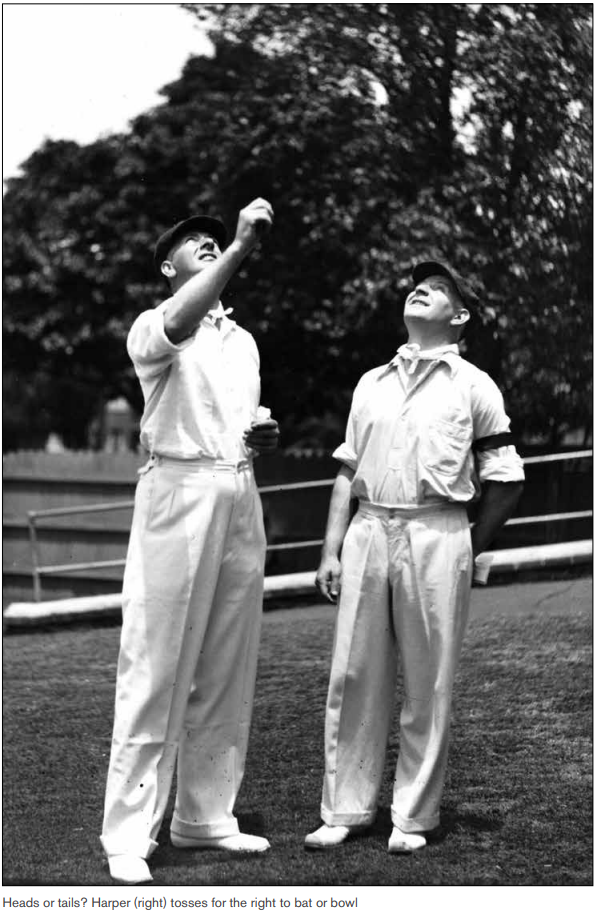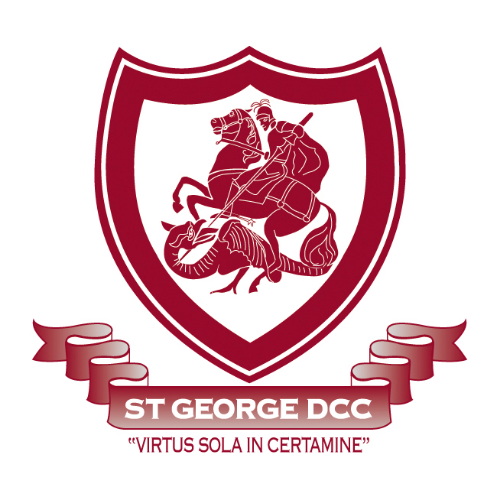Horace Harper - St George District Cricket Club First Grade Player Number 17
St George Cricket Club | October 15, 2024

St George First Grade Player No.17
In its debut season of first grade, 19 men represented St George District Cricket Club in the 13 matches played. The 17th man to do so, Horace Edward Harper, had a storied career well beyond the cricket pitch.
In the life of Horace Edward Harper, cricket was merely a brief candle to the service of his country and his community. Born in Sydney on 11 June 1898, Harper was named after his father, Horace Edward Harper Sr who was heavily involved with sport in the St George area. Harper Jnr attended the prestigious Sydney High School before continuing his studies at the University of Sydney. Harper’s studies as an Arts student were disrupted by his enlistment to serve, aged 19, with the AIF in 1918. On 27 September 1918, less than two months before the Armistice, Harper was allotted to the 55th Battalion. The Battalion was involved in the pivotal Battle of St. Quentin Canal which began on 29 September 1918 and lasted until 10 October 1918. The battle resulted in the first full breach of the Hindenburg Line, a German defensive position which had been constructed during the Northern Hemisphere winter of 1916-17.
In comparison to many others from the First Grade side, Harper’s stint at St George was quite short. His first season with the club in 1920-21 yielded 125 runs at an average of 12.50, with a highest score of 32. Despite this tough introduction to Grade cricket, Harper managed a doubly successful season in 1921-22. He scored 250 runs at an average of 25 in Second Grade, with a highest score of 72 against Mosman. Horace’s leadership qualities were soon recognised and he was chosen as Captain of the 2nd Grade XI during the same season. In a diary entry, he referred to this selection as a great honour. Harper was selected to play First Grade for the final two matches of the 1921-22 season. In two innings he managed a duck and 10. These were his only two innings in First Grade cricket for St George. In a tough first grade debut, Mosman compiled 8 for 409 in 210 minutes. Disaster seemed imminent at 6 for 76, before Ted Adams registered St George’s maiden century in First Grade. Despite the effort, Mosman won by 146 runs. The following season, Harper scored 267 in Second Grade at an average of 15.60. His highest score was 36.
At the end of his cricketing career, Harper became an advocate for those around him. He was a Grandmaster of the Independent Order of Odd Fellows from 1928-32 and went on to represent the Arncliffe Electorate in the New South Wales Legislative Assembly in 1932. Harper’s election campaign promised a “Restoration of Subvention Benefits to Friendly Society Members, and a fair deal for all sections of the community!” The UAP as a whole campaigned fervently against former Premier Jack Lang and the Labor Party which had been dismissed by NSW Governor Sir Philip Game on 13 May 1932, the first and only time that an Australian Premier has been removed from office by his own Governor.
After losing 31 seats in a landslide election, the Labor Party held only 24 of the available 90 seats in New South Wales. The UAP/Country Coalition held the remaining 66 seats. In the seat of Arncliffe, Harper defeated Labour party whip Joseph Cahill who had a 20.7% swing against him. Harper won the seat by 555 votes on the Two-Party-preferred result. His maiden speech in the NSW Legislative Assembly on 7 September 1932 suffered a number of interruptions from other members of Parliament. During the speech moving the adoption of the address-in-reply, he was interrupted by Lang who referred to Harper as a “political accident!” In response, Harper stated,“The Hon. Member for Auburn [Lang] has referred to me as ''a political accident," but I am not known, as is the Hon. member for Auburn, throughout Australia and throughout the world, as a political calamity, and I prefer to be called an accident to being called a calamity.”
Following his speech, Lang congratulated Harper for the “excellent manner and method” of his speech on the motion.
In 1939 Harper criticised the NSW Cricket Association only “dabbling” with a daylight savings scheme which would have increased the amount of play. Harper declared, “Cricket in Australia suffers because we do not have enough of it. It is encouraging that we can produce the Bradmans and the O’Reillys with the few hours that are available for big cricket… The extra hour of cricket in Australia would be of great benefit. We could discuss the question of Sunday play later.”
One wonders how Harper would view the cricketing model of the 21st century. In 1938-39 a day’s play of cricket would consist of four hours. Across 26 Saturdays of the calendar year, there was 104 hours of play in a season. In contrast, the 16 rounds of the 2024-25 First Grade season consists of 150 hours of play across 20 weekends of the calendar year. On top of this, there of course exists the Kingsgrove Sports Twenty20 Cup, the First Grade Limited-Overs Cup finals and the Belvidere Cup finals which can see some clubs playing over 200 hours of First Grade cricket in one season.
In later life, Harper became “the well-known newsagent of South Hurstville”. On 14 February 1970 he passed away at the age of 71. He had achieved much in a full life and will always be remembered as one of the 19 pioneers of St George District Cricket Club First Grade.
By Nathan Anderson








